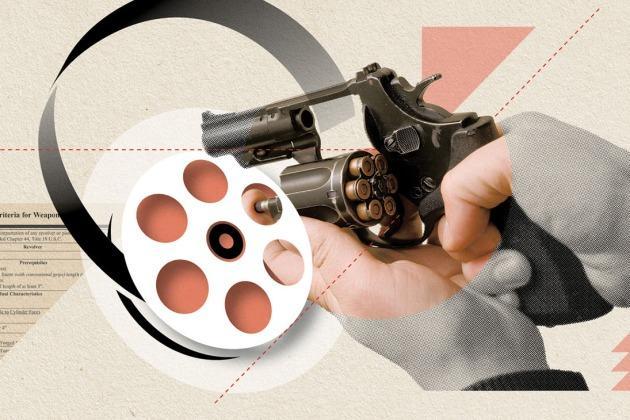
On Jan. 3, two Democratic state senators in California introduced separate bills that would come to represent distinct approaches to tackling safety on film and TV sets in the wake of the Rust tragedy. Sens. Anthony Portantino and Dave Cortese introduced Senate Bills 829 and 831, respectively, which both propose further regulating the use of firearms and blanks during production and the safety training required for cast and crew, essentially prohibiting live ammunition except in ultra-specific scenarios (831, however, also requires the institution of a set safety supervisor role and the performance of a preproduction “risk assessment”). Both legislators have been clear that their legislation was motivated by the Oct. 21 shooting on a New Mexico set that left cinematographer Halyna Hutchins dead.
But it’s the differences between their approaches that shed light on industry groups’ lack of consensus over how to make production safer. While both senators have spoken with guilds like the Directors Guild of America (DGA) and IATSE as well as the Motion Picture Association — the trade group advocating for the major studios and Netflix — the MPA is supporting SB 829, and many unions back SB 831. Now, as the bills are en route to the same Senate committee, the questions they raise — about whether the Rust tragedy should lead to firearms regulation specifically (SB 829) or a larger overhaul of set safety practices (SB 831) — are coming to a head, and a familiar tension between employers and labor leaders, independence and oversight, is simmering beneath the surface. “The crux of the situation comes down to, is there a distinction between the firearms issue and other issues?” says Portantino, a former art director and prop master who has overseen armaments on set.
More from The Hollywood Reporter
Portantino’s SB 829 requires a fire code official to be present during the use of firearms and blanks on set and tasks the Office of the State Fire Marshal with developing safety courses for crewmembers in collaboration with the industry’s joint labor and management safety committee. (That committee’s safety bulletins, which are decided by major studios and unions but not mandatory for productions, have long set safety standards, including for firearms, on major titles; Rust did not follow their own safety guidelines based on these bulletins, an April 19 New Mexico Occupational Health and Safety Bureau report said.)
MPA vp state and local government affairs Melissa Patack says the organization is supporting SB 829 because “the focus is on training, and the MPA member companies believe that that needs to be the priority.” The MPA is also supporting making their members’ and union projects’ best practices and policies “a legal standard for all productions in California,” she says.
Cortese’s SB 831 takes a more wide-ranging approach, calling for the institution of a “set safety supervisor” — an independent employee who would make a risk assessment in preproduction that is specific to the project and attend set every day — on all productions. As the bill is currently written, the supervisor would have the power to shut down production “for further review” if they deem it necessary. Though not a common position on American sets, such supervisors are used in Australia, the U.K. and New Zealand, advocates say.
Cortese, chair of the California Senate’s Labor, Public Employment and Retirement Committee, also requires the Division of Occupational Safety and Health (Cal/OSHA) to enforce the bill and propose a standard for the use of firearms on set to be adopted by January 2024.
Cortese — who in the immediate aftermath of the Rust shooting called for a ban on live ammunition and firearms capable of shooting live ammunition on sets, but modified that approach after industry feedback — says it was a conversation with the DGA about larger safety concerns that led him to extend his bill beyond firearms regulations. He says his bill creates “checks and balances in the system so that it’s much, much, much less likely that somebody will get away with disregarding the very rules that we’ve promulgated here.”
A long list of unions and labor groups, including the DGA, several IATSE locals, SAG-AFTRA and the Hollywood Teamsters, have come to formally support Cortese’s SB 831. “There are a lot of protocols in our industry, there are a lot of safety bulletins,” says Rebecca Rhine, national executive director of IATSE Local 600, the union that Halyna Hutchins belonged to and which has also lost members Sarah Jones and Brent Hershman in the past few decades. “What we think is that there’s a need to connect all of those rules and protocols to the actual on-the-ground workflow. And we believe that the safety supervisor is the piece that does that.”
Though neither the MPA nor labor groups have come out in opposition to each other’s favored bills, the set safety supervisor position as written in SB 831 may be one issue for management: Studios might not take kindly to an employee retaining the power to autonomously — and expensively — stop production.
On the flip side, Portantino may face resistance from some who think SB 829 “doesn’t quite go far enough in terms of having a penalty,” says Dario Frommer, a partner at Akin Gump who is a former majority leader of the California State Assembly. Outgoing IATSE Local 600 national president and seasoned cinematographer John Lindley (Snowfall, Field of Dreams) maintains that he doesn’t have criticisms for any legislators “trying to make the set a safer place” but believes a full-time set safety supervisor is “the simplest way forward for [management]. They can afford it, they know how to do it around the world, and they should just get on board doing it in North America.”
While the bills are still in the early stages of the legislative process — if they make it through the Senate, they will then follow a similar path in the State Assembly before landing on the governor’s desk — they will reach a critical point by entering the Senate Appropriations Committee (chaired by Portantino) in May. The senators say the language of their bills isn’t set in stone, and conversations with stakeholders are ongoing; labor and management leaders are also currently in talks.
Portantino says he hopes labor and management “continue to talk and that the final product represents more of a common ground.” Cortese adds: “We’ll take under consideration any proposed amendments that are consistent with the current intent of the bill.” If one or both of the bills continue to progress, the governor may receive legislation for consideration in August or September.
However these bills land, property person Karl Weschta, a member of the nonprofit American Entertainment Armories Association, hopes that they lead to greater standardization of practices across the country. “California typically will start this sort of thing, and then others will look to California’s way of doing things, and potentially [this could] be better for everybody,” he says. While legislation aiming to tackle film set safety training was postponed indefinitely in New Mexico earlier this year, a bill sponsored by New York State Sen. Kevin Thomas, which bans live ammunition at film production facilities and requires firearm training, is making its way through New York Senate committees.
Frommer says he would “not be surprised” if California’s two bills tackling the Rust tragedy were combined into one in the near future. “If you’re having two bills go on the floor, you’re making members choose between two really strong constituents in the legislature — organized labor and the motion picture [industry].” He believes the end result will likely be “something that maybe both parties won’t love but they can live with.”
A version of this story first appeared in the May 10 issue of The Hollywood Reporter magazine. Click here to subscribe.




